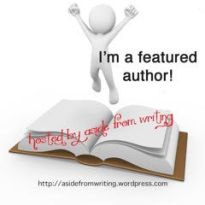
Fictional World Map (Created by Dan Meth)
Continuing the topic of naming locations, I’m going to do my best to come up with some useful and humorous tips. I only had to create one new place in War of Nytefall: Rivalry, so these are going to have to go outside of the new release. Apelios doesn’t really give me a lot to work with either. Here we go:
- Make the location pronounceable. It may be funny to write one with only vowels or consonants, but you could lose a few readers if they can’t figure out how to say things. It can help to have a pronunciation guide or mark it during the first appearance, so this is more of a guideline.
- Consider the terrain before you come up with the name. You can only get away with naming a desert city after water once or twice before the joke gets stale. The founders would have to be aware of these things too. A person who has lived in the clouds for eternity won’t have a good chance of knowing what a worm is, so they probably wouldn’t use it to name a town.
- Use real world examples for your fictional ones to help get the creativity flowing. This can really help with natural territories. Rocky Mountains, Great Barrier Reef, Grand Canyon, and other locations in our world are fairly simplistic. You would be surprised how many places can be named by how they look. It can easily be chalked up to an ancient traveler being awed and not that creative.
- If you name a place after a person then you need to come up with some history. It doesn’t have to be much. Could be how the person found the area or some great feat that they accomplished to earn the right. To relate this to the reader, you can have a local explain it briefly or have the characters read a sign about it. To avoid an info dump, you want to be brief or spread out the story.
- As with monsters and characters, you can always use another language to come up with names. Consider something about them and then go to Google Translate. It can be related to the terrain, a historic event, their biggest export, or whatever makes this place stand out enough to be included in the story. Do keep in mind that people who actually speak the language will understand it, so try to keep it clean. Unless the joke is that the town is really a swear word.
- Accept that people will mispronounce the fictional locations if they are made by letters being tossed together. Seriously, I’ve gotten Windemere, Windmere, WindEmere, Winemere, Winmere, Windermere, Windermore, and a few others. (For those who wonder, it’s Win-deh-mere. This probably doesn’t help.)
- Don’t rely too much on common endings for locations such as -burg, -town, City, Village, etc. Only way to get away with using the same ending is if you build it into your world creation. In that case, you can NEVER stray from the pattern or the whole world will implode. The deaths of millions of fictional characters will be on your head, you monster.




A relevant-to-topic trivia-bit: A common “clever” complaint about Tolkien is that he invented several languages for Middle-Earth and then named a mountain Mount Doom (the implication being that this is a cliche and boring name because it’s in a language the readers know from real life). The people who think they’re clever for pointing this out always miss the fact that this is the “common tongue” translation and the same mountain does have names in some of the invented languges, too.
I have a place name in my stories that I suspect a lot of readers would mispronounce. I’m thinking of changing the spelling slightly to prevent that. On the other hand, there’s a place in my twin’s fiction called Cedeforthy, and although he chose not to use that for the title of a novel set there, he did keep the name and its spelling intact.
LikeLiked by 1 person
I’ve actually never heard of that complaint, which is surprising. Mostly, I run into people who whine about the eagles. Good point on how places can have multiple names if you work with different cultures and langues in your fantasy world. I really need to remember that for some places.
I’ve learned that there will always be somebody who mispronounces a name. The best example I have is my own blunder when looking at colleges. There’s a place called Purchase, NY. Now, you’re probably reading that as the common word ‘Purchase’ and you would be right. I thought there couldn’t be a town with that name, so it had to be ‘Per-Kay-Zee’. Not my greatest moment. To be fair, it’s not my worst either. My point here is that there’s always somebody making a mistake, so I’d say go with what you feel is right for the story and world.
LikeLiked by 1 person
I’m trying to think of a name for a place where aliens would live…I’m picturing it as a combination of a dry desert-like place and a cozy, sunny town. My brain isn’t responding though…if you could suggest a few tips that would be soooo great! Thank you!
LikeLike
Tough call. It really depends on the type of aliens. I assume they would have the correct adaptations for the planet. So, an alien from an arid region may be darker skin to avoid burning and able to survive on very little water. With my creatures, I usually pick the environment first and then design them to survive. Going that route results in the pairing always feeling natural. Though, I will admit it can go either way as long as you have one piece work off the other.
LikeLike
Reblogged this on Chris The Story Reading Ape's Blog.
LikeLike
Thanks for the reblog. 🙂
LikeLiked by 1 person
Welcome, Charles 👍😃
LikeLike
It is fun to learn more about how you establish names, Charles. I loved the consequences spelled out in number seven.
LikeLike
It’s where so many falter and perish.
LikeLiked by 1 person
Ha ha ha.
LikeLiked by 1 person
Another great post! Great tips to pass on.
I can’t help thinking of George Lucas, who took criticism for some of the names he used. (“Unimaginative” is one criticism I heard.) Place names are really hard. As you mentioned, you have to really know the terrain and the culture.
Some complain about fantasy names being difficult to pronounce (some have too many consonants, I guess).
LikeLike
Lucas is unimaginative? Tattooine? Dagobah? Don’t think that complaint holds much water.
LikeLiked by 1 person
That was before the reboot. I don’t hear many complaints about Lucas these days.
LikeLike
Wait. I don’t remember Star Wars getting rebooted. How did I miss that?
LikeLike
I’m suffering through some of this now. I want everything to have an Asian flare in my story. This leads to a lot of word mangling. I’ve smoothed over most of it, but I’ve use Google translate and all the tricks. The main characters are simple enough, Serang and Yong, but I’ve no doubt there are some pronunciation variations. I think as long as readers can set something in their mind we’re good to go. I get tired of some overly-creative fantasy names myself. Credit to you for “Bob.”
LikeLiked by 1 person
Bob definitely stands out among the names of my characters. Serang doesn’t seem fairly simple, but you’re right that there could be a few ways to pronounce it. Do people turn on an author if they learn that they had the pronunciation wrong?
LikeLiked by 1 person
No idea. I live in a cave and only broadcast into the world.
LikeLike
Reblogged this on Plaisted Publishing House and commented:
Some great tips here
LikeLike
Thanks. 😁
LikeLike
I enjoyed this, and there are some good nuggets of advice. For my world, the names of places depend on the region and who’s in that region. Different cultures in my world (Partha) have different naming conventions. For instance, the society based more around technology have places named like, “Iron City” or “Wavebreak” which feel very plain. On the other side of the continent, the more magical side of society have more fantasy-esque names like Aerilia or Naerin. I think I have a total of four different naming conventions depending on the place and the people living there. But I’m happy to see that I prettymuch followed all of your list~
LikeLike
Very cool. I like that idea about tech and magic levels can influence location naming. What are the other two conventions?
LikeLike
A helpful post, Charles. I especially enjoyed the humor in it. 😀 — Suzanne
LikeLike
Thanks. Figure humor helps keep the posts interesting. ☺️
LikeLike
Reblogged this on Where Genres Collide.
LikeLike
Thanks. 🙂
LikeLiked by 1 person
I adore your map so much!
For me, it’s a priority to have all the names sound like they could come from the same culture. So you don’t want Johnsonville be right across the river from Flammoria and then Ak’wa’darak be the next town over.
LikeLike
Thanks. Stumbled onto it and found a lot of people have done amalgamation maps. Not sure what else to call them.
Good point on keeping things consistent.
LikeLiked by 1 person
Pingback: Top 5 of 2019: 7 Tips to Creating Fictional Location Names (#5) | Legends of Windemere
I absolutely ADORE that your Fantasy World Map includes Lidsville and Living Island, as well as Neverland (it’s NOT “Never Neverland”)! Kid of the 60’s that I am, you sent me zipping right back to my childhood! Thanks for a warm, nostalgic moment!
LikeLike
Forgot where I found this thing. Honestly, I’m not sure where Lidsville and Living Island come from. Sadly, I’m a kid of the 80’s and I don’t think I was exposed to those.
LikeLike
“Lidsville” was a Sid & Marty Kroft live-action costumed chidren’s show of the same name, from the 70’s and 80’s.
“Living Island” was the main location in a similar show of that period, also by Sid & Marty Kroft, called “H. R. Pufnstuf.” Pufnstuf was the mayor of “Living Island.”
“Land Of The Lost” is quite famous; I’m surprised you haven’t heard of it. It, too, is a Sid & Marty Kroft production, but more sophisticated. “The Land Of The Lost” was, basically, a pocket dimension with, among other things, giant intelligent lizards called Sleestak. Oh, and dinosaurs — lots and lots of dinosaurs — and a human family trapped there.
Hope this info helps.
LikeLike
Got it. Never saw the first two. I did see a remake of ‘Land of the Lost’ in the 90’s. Sorry if I said I didn’t know that one.
LikeLike
I absolutely ADORE that your Fantasy World Map includes Lidsville, Land of the Lost, and Living Island, as well as Neverland (it’s NOT “Never Neverland”)! Kid of the 60’s that I am, you sent me zipping right back to my childhood! Thanks for a warm, nostalgic moment!
LikeLike